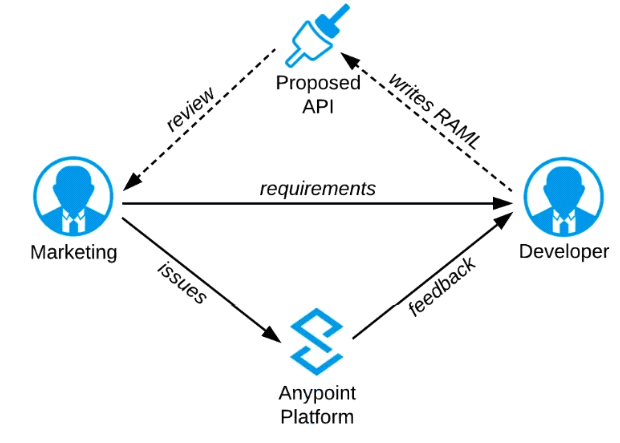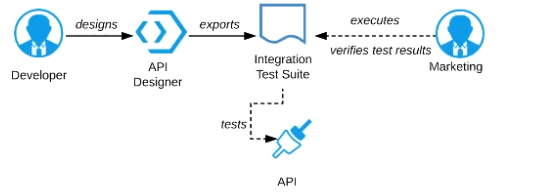At ValidExamDumps, we consistently monitor updates to the MuleSoft MCPA-Level-1 exam questions by MuleSoft. Whenever our team identifies changes in the exam questions,exam objectives, exam focus areas or in exam requirements, We immediately update our exam questions for both PDF and online practice exams. This commitment ensures our customers always have access to the most current and accurate questions. By preparing with these actual questions, our customers can successfully pass the MuleSoft Certified Platform Architect - Level 1 exam on their first attempt without needing additional materials or study guides.
Other certification materials providers often include outdated or removed questions by MuleSoft in their MuleSoft MCPA-Level-1 exam. These outdated questions lead to customers failing their MuleSoft Certified Platform Architect - Level 1 exam. In contrast, we ensure our questions bank includes only precise and up-to-date questions, guaranteeing their presence in your actual exam. Our main priority is your success in the MuleSoft MCPA-Level-1 exam, not profiting from selling obsolete exam questions in PDF or Online Practice Test.
A company has created a successful enterprise data model (EDM). The company is committed to building an application network by adopting modern APIs as a core enabler of the company's IT operating model. At what API tiers (experience, process, system) should the company require reusing the EDM when designing modern API data models?
Correct Answer: At the process and system tiers
*****************************************
>> Experience Layer APIs are modeled and designed exclusively for the end user's experience. So, the data models of experience layer vary based on the nature and type of such API consumer. For example, Mobile consumers will need light-weight data models to transfer with ease on the wire, where as web-based consumers will need detailed data models to render most of the info on web pages, so on. So, enterprise data models fit for the purpose of canonical models but not of good use for experience APIs.
>> That is why, EDMs should be used extensively in process and system tiers but NOT in experience tier.
Refer to the exhibit.

A RAML definition has been proposed for a new Promotions Process API, and has been published to Anypoint Exchange.
The Marketing Department, who will be an important consumer of the Promotions API, has important requirements and expectations that must be met.
What is the most effective way to use Anypoint Platform features to involve the Marketing Department in this early API design phase?
A) Ask the Marketing Department to interact with a mocking implementation of the API using the automatically generated API Console

B) Organize a design workshop with the DBAs of the Marketing Department in which the database schema of the Marketing IT systems is translated into RAML

C) Use Anypoint Studio to Implement the API as a Mule application, then deploy that API implementation to CloudHub and ask the Marketing Department to interact with it

D) Export an integration test suite from API designer and have the Marketing Department execute the tests In that suite to ensure they pass

Correct Answer:Ask the Marketing Department to interact with a mocking implementation of the API using the automatically generated API Console.
*****************************************
As per MuleSoft's IT Operating Model:
>>API consumers need NOT wait until the fullAPI implementation is ready.
>>NO technical test-suites needs to be shared with end users to interact with APIs.
>>Anypoint Platform offers a mocking capability on all the published API specifications to Anypoint Exchange which also will be rich in documentation covering all details of API functionalities and working nature.
>>No needs of arranging days of workshops with end users for feedback.
API consumers can use Anypoint Exchange features on the platform and interact with the API using its mocking feature. The feedback can be shared quickly on the same to incorporate any changes.

An Order API must be designed that contains significant amounts of integration logic and involves the invocation of the Product API.
The power relationship between Order API and Product API is one of "Customer/Supplier", because the Product API is used heavily throughout the organization and is developed by a dedicated development team located in the office of the CTO.
What strategy should be used to deal with the API data model of the Product API within the Order API?
Correct Answer: Convince the development team of the product API to adopt the API data model of the Order API such that integration logic of the Order API can work with one consistent internal data model
*****************************************
Key details to note from the given scenario:
>> Power relationship between Order API and Product API is customer/supplier
So, as per below rules of 'Power Relationships', the caller (in this case Order API) would request for features to the called (Product API team) and the Product API team would need to accomodate those requests.
Refer to the exhibit.

what is true when using customer-hosted Mule runtimes with the MuleSoft-hosted Anypoint Platform control plane (hybrid deployment)?
Correct Answer:API implementations can run successfully in customer-hosted Mule runtimes, even when they are unable to communicate with the control plane.
*****************************************
>>We CANNOT use Shared Load balancer to load balance APIs on customer hosted runtimes

>>For Hybrid deployment models, the on-premises are first connected to Runtime Manager usingRuntime Manager agent.So, the connection is initiated first from On-premises to Runtime Manager. Then all control can be done from Runtime Manager.
>>Anypoint Runtime Manager CANNOT ensure automatic HA. Clusters/Server Groups etc should be configured before hand.
Only TRUE statement in the given choices is, API implementations can run successfully in customer-hosted Mule runtimes, even when they are unable to communicate with the control plane. There are several references below to justify this statement.
References:
https://docs.mulesoft.com/runtime-manager/deployment-strategies#hybrid-deployments

============================

============================

A System API is designed to retrieve data from a backend system that has scalability challenges. What API policy can best safeguard the backend system?
Correct Answer: SLA-based rate limiting
*****************************************
>> Client Id enforement policy is a 'Compliance' related NFR and does not help in maintaining the 'Quality of Service (QoS)'. It CANNOT and NOT meant for protecting the backend systems from scalability challenges.
>> IP Whitelisting and OAuth 2.0 token enforcement are 'Security' related NFRs and again does not help in maintaining the 'Quality of Service (QoS)'. They CANNOT and are NOT meant for protecting the backend systems from scalability challenges.
Rate Limiting, Rate Limiting-SLA, Throttling, Spike Control are the policies that are 'Quality of Service (QOS)' related NFRs and are meant to help in protecting the backend systems from getting overloaded.
https://dzone.com/articles/how-to-secure-apis